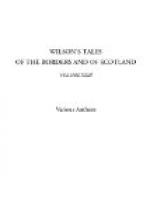This commission was accordingly executed, and the report bore, that “he, the commissioner, had proceeded to the burying-ground of the parish of St. Cuthberts, and there caused David Scott, the sexton, to lay open the grave of the said Henrietta Preston or Napier, and to open the coffin therein contained; which having accordingly been done by the said David Scott and his assistants, the commissioner, upon a faithful examination, aided by the experience of the said David Scott, did find the skeletons of two bodies in the said coffin identified as that of the said lady, one whereof was that of a woman apparently of middle age, and the other that of a babe, which lay upon the chest of the larger skeleton in such a way or manner as to be retained or held in that position by the arms of the same being laid across it; that having satisfied himself of these facts, the commissioner caused the coffin to be again closed and the grave covered with all decency and care. And he accordingly made this report to their lordships.”
The fact thus ascertained, in opposition to the expectation of those who favoured the orphan, was viewed by the court as depriving, to a great extent, the case of that aspect of a riddle by which it had been so unfortunately distinguished; and as the case had been hung up even beyond the time generally occupied by cases at that period, when, as it was sometimes remarked, law-suits were as often settled by the old rule, Romanus sedendo vincit—by the death of one or other of the parties—as by a judgment, the case was again put to the Roll for a hearing on the effect of the new evidence. It was contended for the nephew by Mr. Wight, that the question was now virtually settled, insomuch that the court was not bound to solve riddles, but to find to whom pertained a certain right of inheritance. The birth of the child had been sworn to by the nurse, as well as its death, and the final placing of it in the coffin; and now the court had, as it were, ocular demonstration of these facts by the body having been seen by their own commissioner, placed on the breast of the mother in that very peculiar way described by Mrs. Temple. All claim on the part of the girl was thus virtually excluded, for the proceedings which took place that evening in another room, under circumstances of suspicion, were sworn to only by Mrs. Hislop herself, an interested witness, and were only partially confirmed by an eavesdropper, who, as eavesdroppers generally do (except when their own characters are concerned), perhaps heard according as foregone prejudices induced her to wish. These suspicious proceedings might be explained by as many hypotheses as had been devised by the wise judges of the taverns, among which was the theory of the living child being Cowie’s own by Isabel Napier, and palmed off as Mrs. Napier’s to hide the shame of the true mother,—all unlikely enough, no doubt, but not so impossible as that the coffined child should now be alive and awaiting the issue of this case, in the expectation of being Lady of Eastleys.




